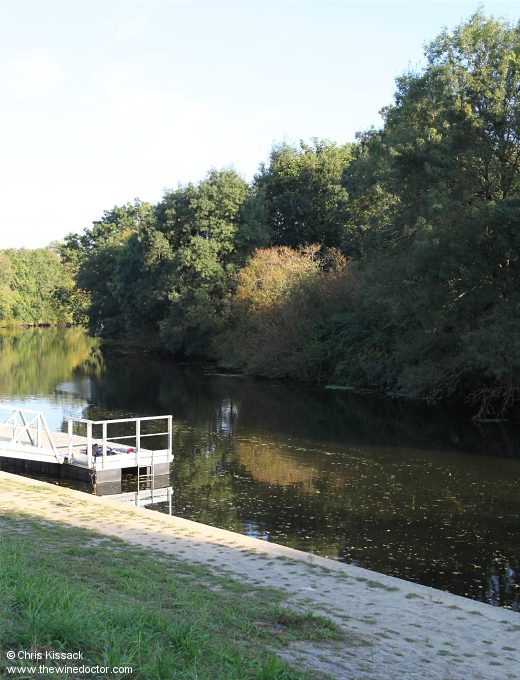Le Pallet, The Melting Pot
My final guide to the crus communaux of Muscadet brings me full circle, as I find myself once more standing on the banks of the Sèvre Nantaise. This time, however, there is no thunderous roar as I experienced when stood upon the Medieval bridge at the heart of Clisson, no torrent of water rushing with great urgency through mill races and over weirs. Here instead the water moves with a much more languid demeanour, wending, weaving and eddying its way along, doing its best to coax along those unfortunate leaves and twigs which have fallen onto its surface. They join the river on its journey down to the ancient causeway and lock at Vertou, before ultimately it deposits this cargo of leafy flotsam into the Loire.
I am stood upon the banks of the Sèvre Nantais as it flows through Le Pallet, one of the first three crus communaux to be ratified, alongside Gorges and Clisson, back in 2011. Or, to be more precise, I am in a little hamlet named Port Domino, which teeters on the right bank of the river, opposite Monnières-Saint-Fiacre. Here the trees and riverside vegetation have been cleared, and an ancient landing stage allows me to walk right down to the water’s edge.
If you want to take a trip back in time, you could do worse than stop off here. Situated just 40 metres downstream of the bridge which straddles the Sèvre Nantaise at Monnières-Saint-Fiacre, Port Domino marks the end of the route for river traffic. Further upstream, beyond the bridge, the river is no longer navigable, the waters too shallow or rocky, the way blocked by weirs (the first of many is just one kilometre upstream). As a consequence this was where goods from the region, most pertinently barrels of wine but also agricultural produce, stone and lime, would begin their journey downstream.
As a consequence a sturdy river port was built here, and it still exists, today augmented by a modern floating jetty (pictured). It has clearly been well cared for down the years; there is a broad landing stage of stone construction, angled slightly towards the river, ideal for rolling heavy barrels of wine towards the waiting barges. Many vignerons, not just from Monnières-Saint-Fiacre and Le Pallet but from all the communes to the east including Gorges, Clisson and Mouzillon-Tillières, would come here to send their barrels downriver, to Nantes. It must have been quite a sight.

